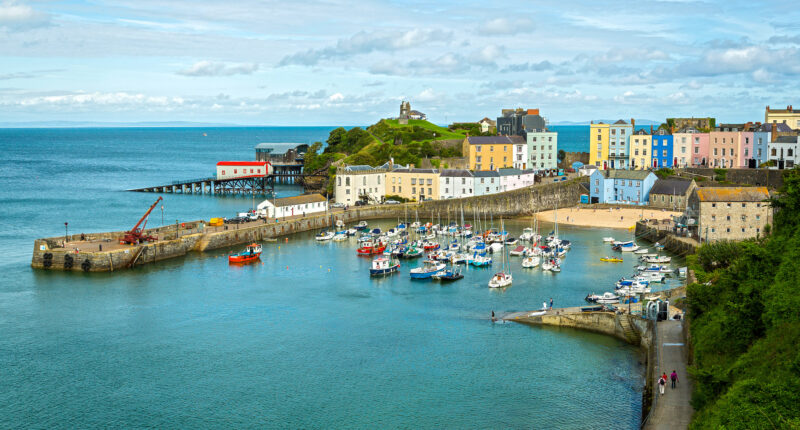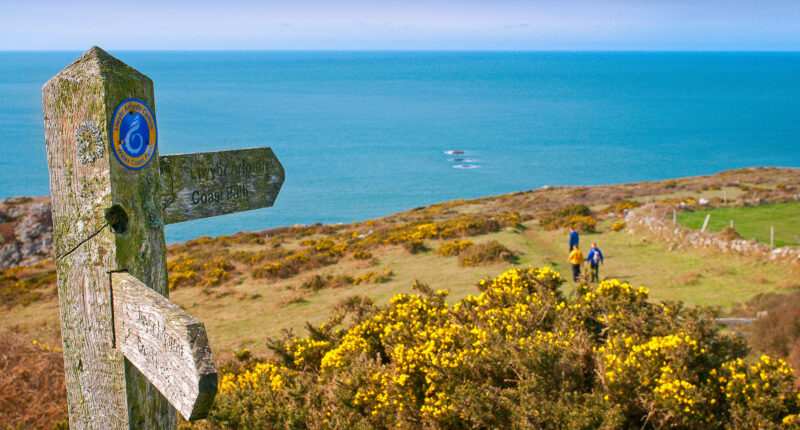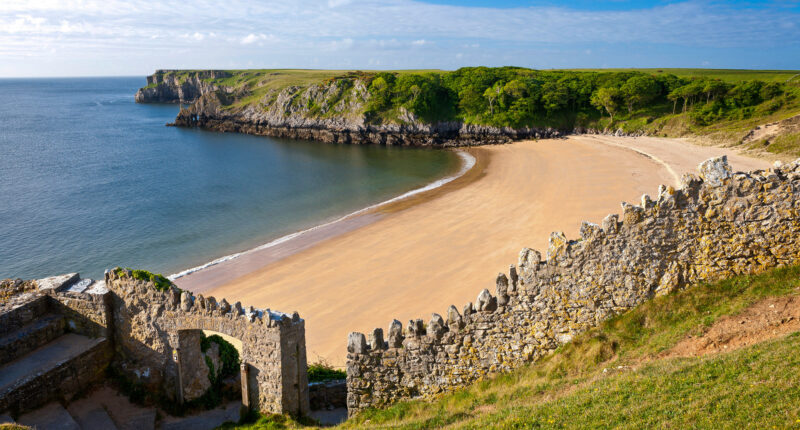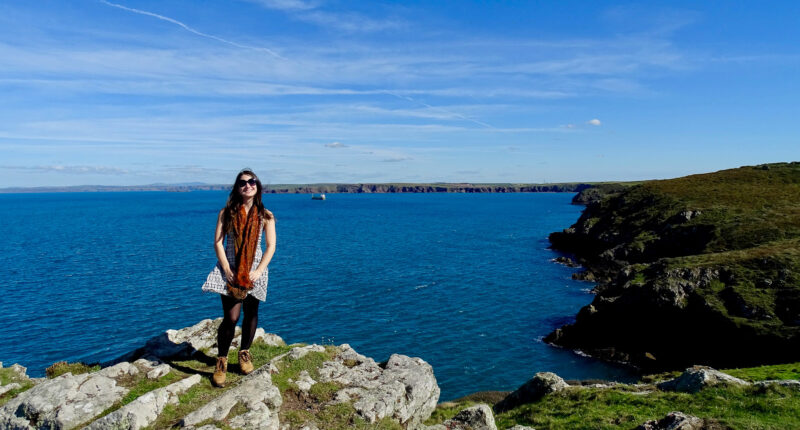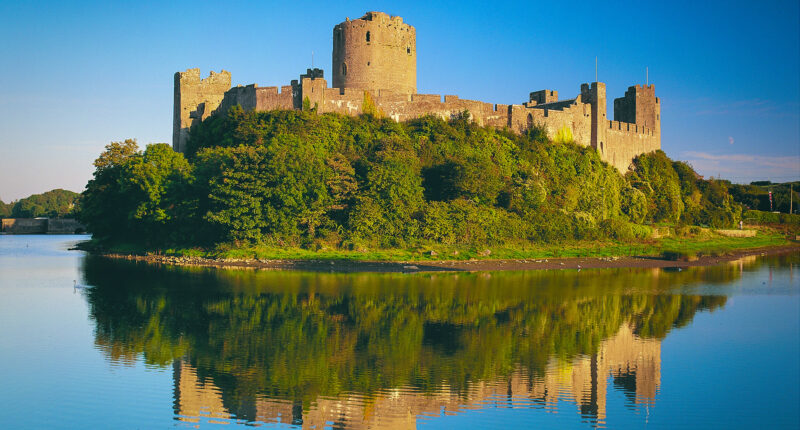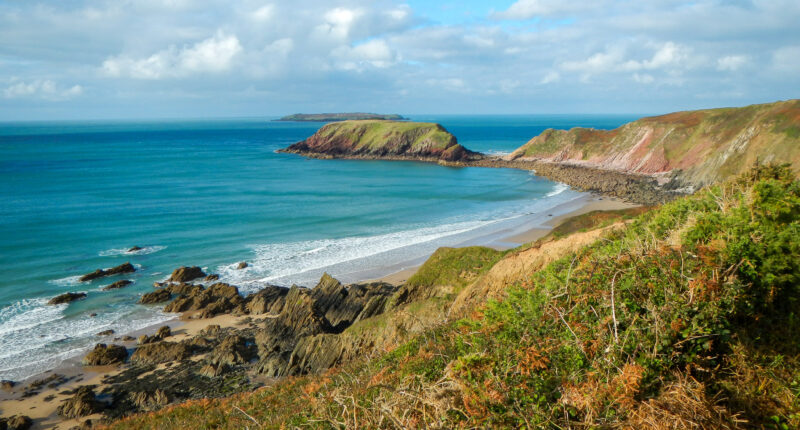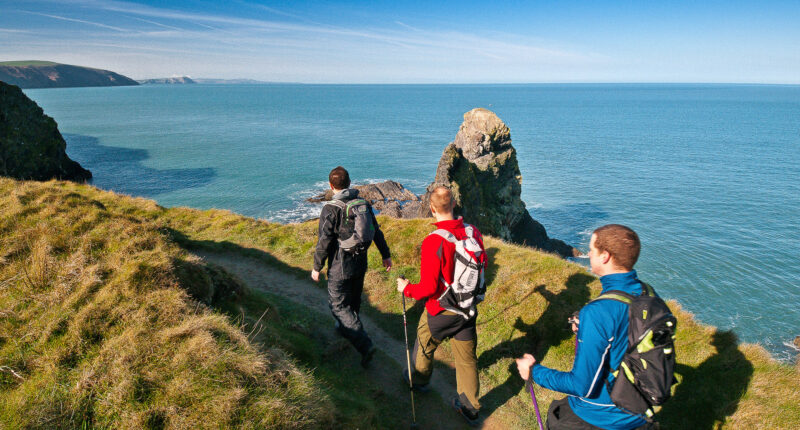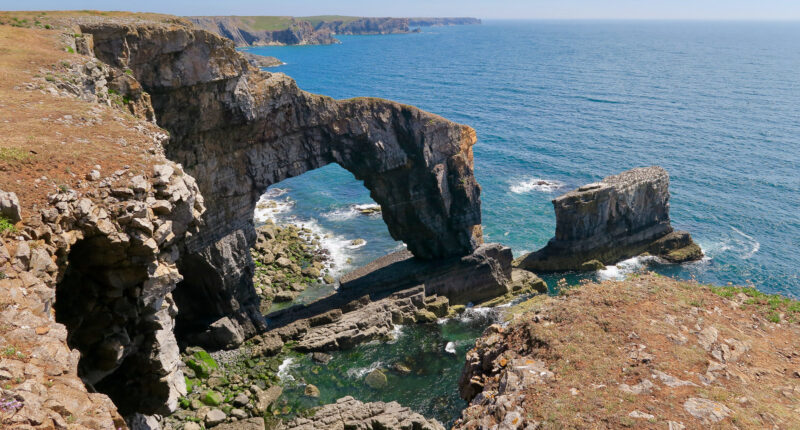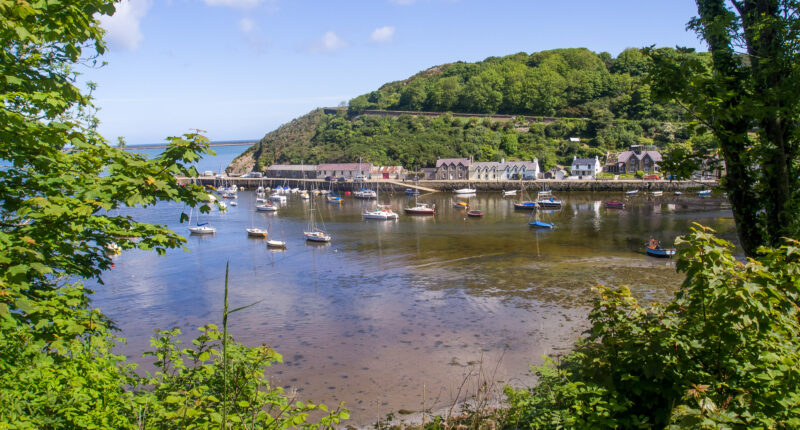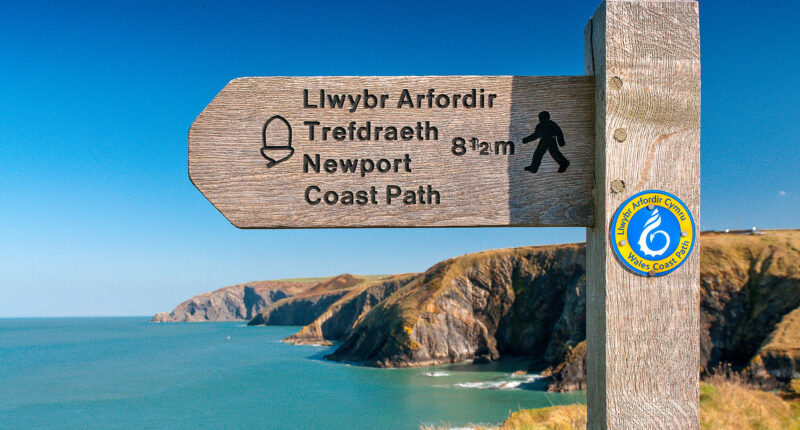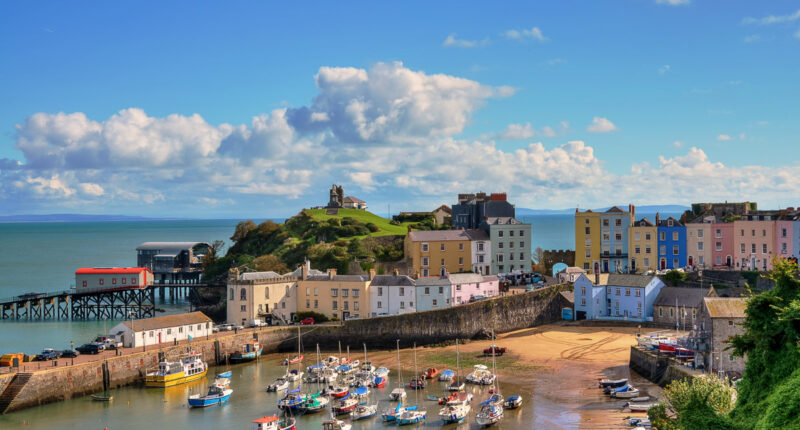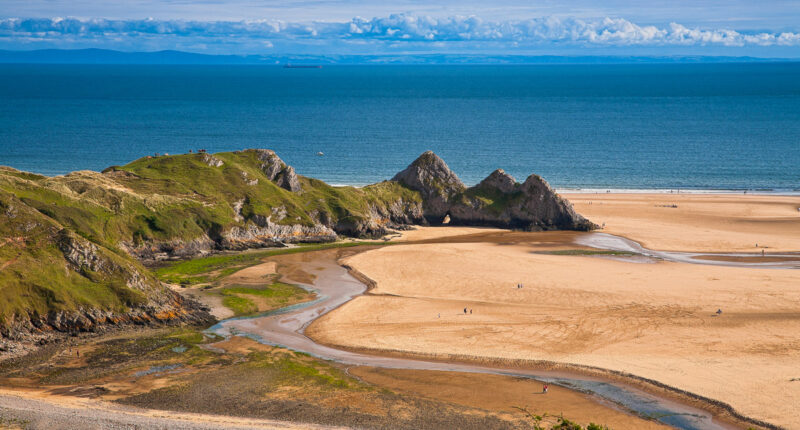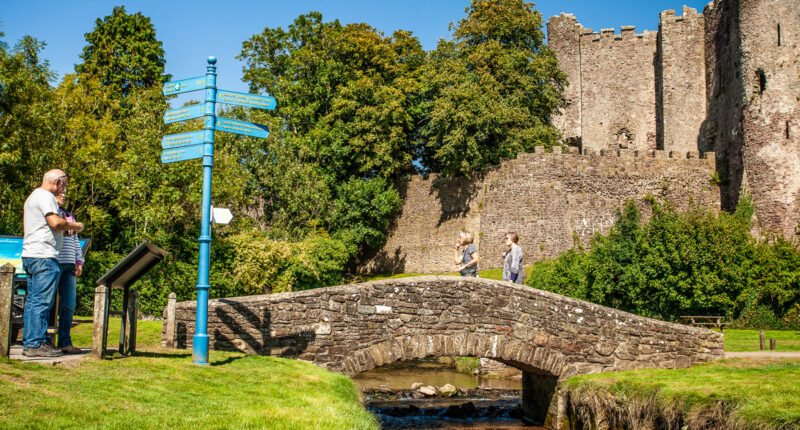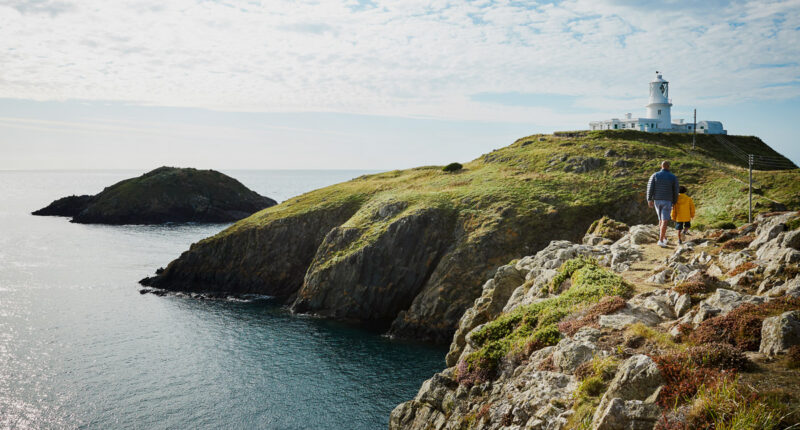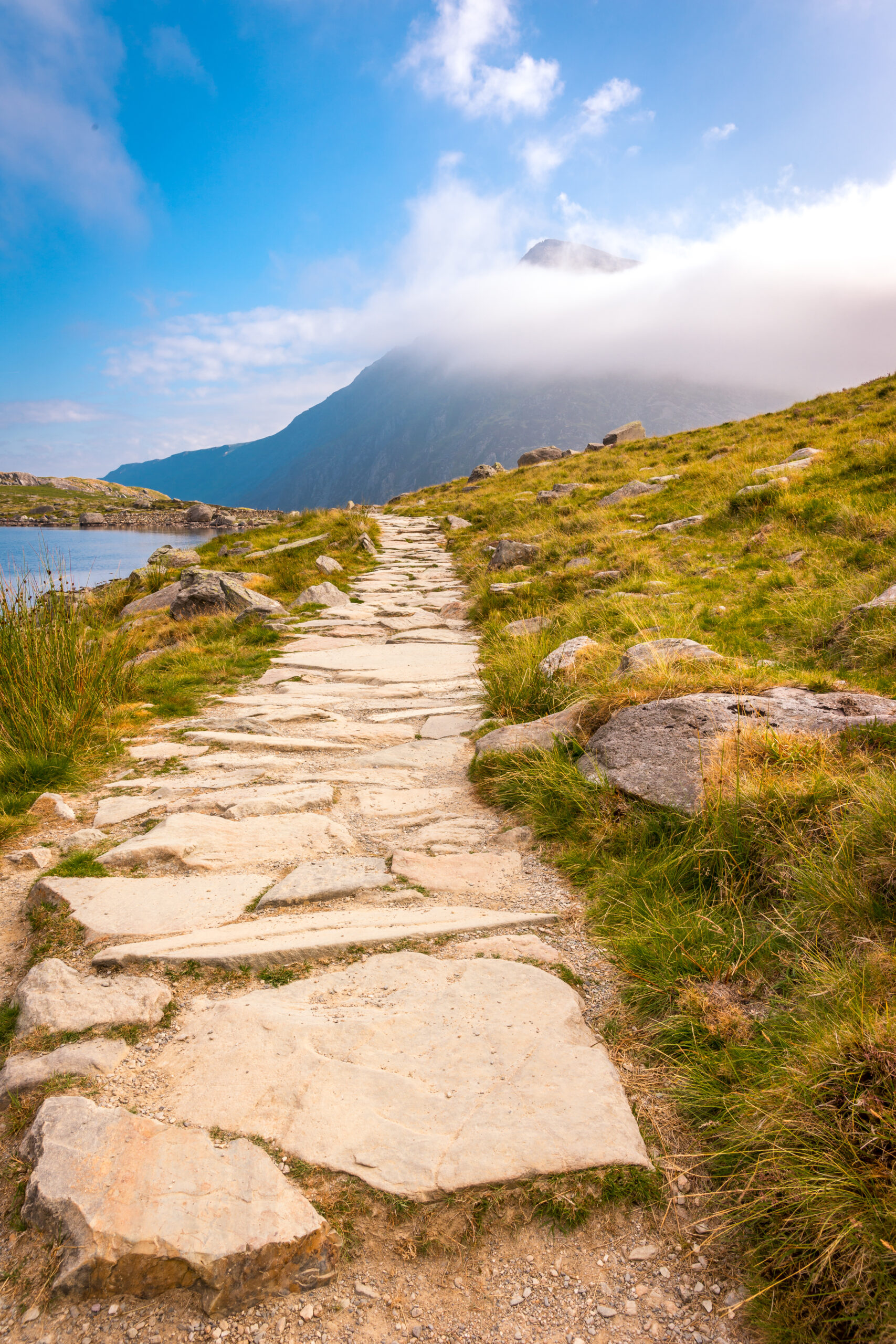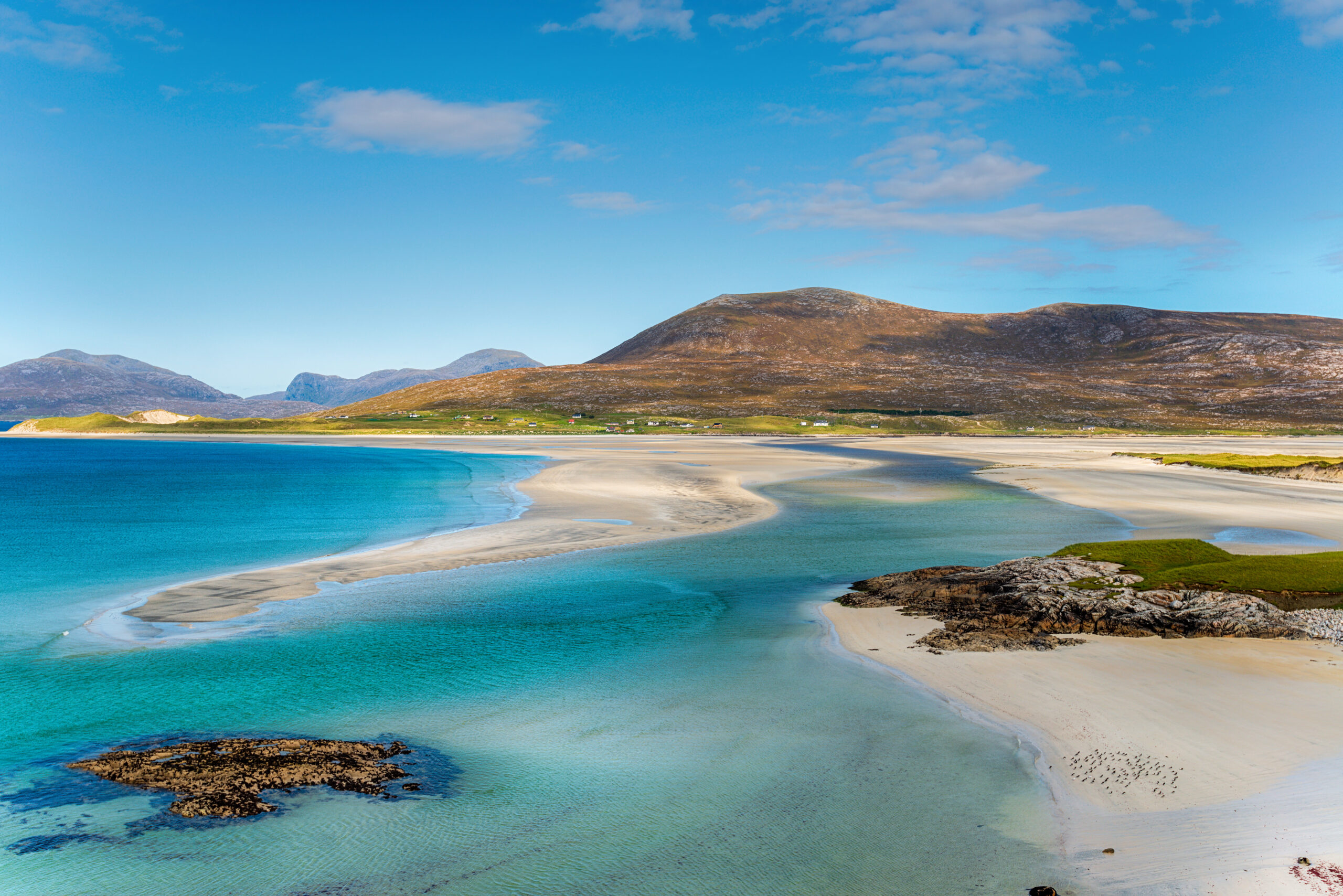Walking the Pembrokeshire Coast Path: Your Complete Guide
- What is the Pembrokeshire Coast Path?
- Why choose the Pembrokeshire Coast Path for your next adventure?
- When is the best time to walk the Pembrokeshire Coast Path?
- How long does it take to walk the Pembrokeshire Coast Path?
- Which itinerary is right for me?
- Where should I add an additional day?
- What is the hardest part of the Pembrokeshire Coast Path?
- What is the easiest part of the Pembrokeshire Coast Path?
- Is there public transport along the route?
- What are the highlights of the trail?
- Do I need to pre-book accommodation?
- Is luggage transfer available on the Pembrokeshire Coast Path?
- How busy is the Pembrokeshire Coast Path?
- Can I walk it solo?
- What footwear do I need?
- How do I reach the start of the walk?
- Is the path well waymarked?
- Will I need a map and guidebook?
- Where can I eat and drink along the trail?
- How can I book a walking holiday on the Pembrokeshire Coast Path?
What is the Pembrokeshire Coast Path?
The Pembrokeshire Coast Path (PCP) is a 186-mile National Trail that stretches along the spectacular coastline of south-west Wales.
Beginning in Amroth in the south and ending in St Dogmaels in the north, it offers a wonderfully varied walking experience through dramatic cliffs, golden beaches, and welcoming seaside towns. The route passes through the Pembrokeshire Coast National Park – the UK’s only coastal national park – and is celebrated for its unspoilt beauty, rich wildlife, and fascinating geology.

Why choose the Pembrokeshire Coast Path for your next adventure?
Walking the Pembrokeshire Coast Path is a rewarding way to experience one of Britain’s most striking coastlines. Whether you’re drawn by the sea views, the history, or the peace and quiet, this long-distance trail has something for everyone:
- Breathtaking scenery – From towering sea cliffs to wide, sandy bays, the views are endlessly impressive.
- Wildlife watching – Look out for Atlantic grey seals, dolphins, and colonies of seabirds.
- Cultural highlights – Discover prehistoric sites, medieval castles, and characterful fishing villages.
- A sense of escape – Compared to better-known trails like the South West Coast Path, the Pembrokeshire Coast Path remains refreshingly peaceful.
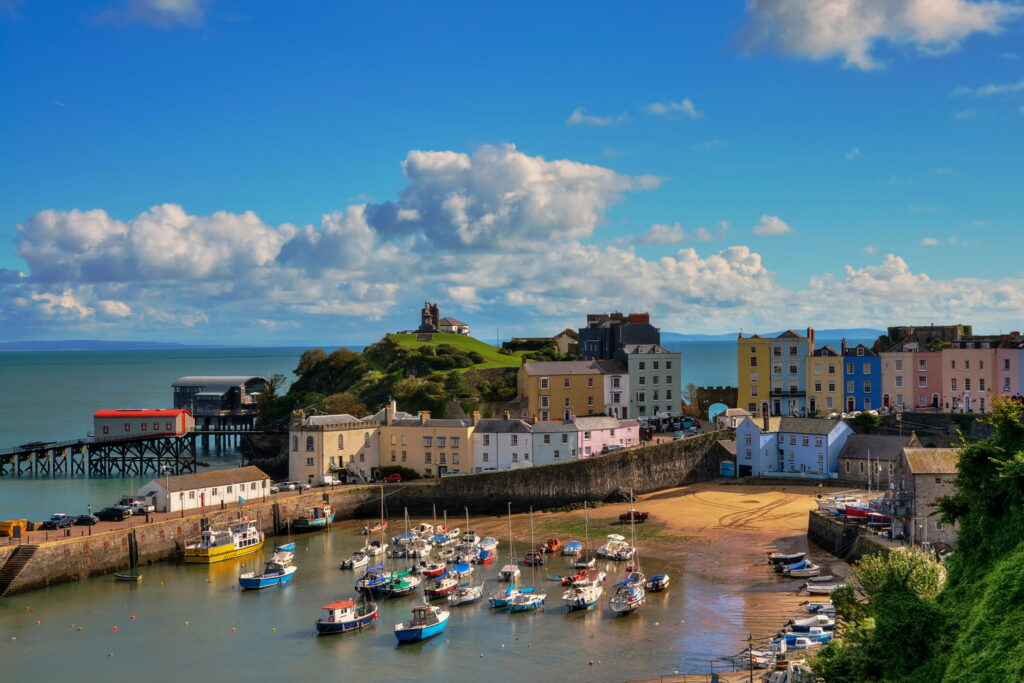
When is the best time to walk the Pembrokeshire Coast Path?
The path has something to offer year-round, but the best time is typically between March and September, when conditions are mild and there are more daylight hours. Each season offers its own highlights.
The best time to enjoy the wildflowers blooming along the path is during April and May.
If you are a wildlife enthusiast, there are lots of opportunities to spot seabirds between spring and autumn. For puffin watching in particular, they are known to land on Skomer Island during May and June.
For your best chance at seeing some adorable seal pups, the best time to walk is typically late August or September.

How long does it take to walk the Pembrokeshire Coast Path?
Completing the entire 186-mile trail typically takes between 13 – 17 days of walking.
For those tackling the full route, our most popular itinerary (PCP2) takes 14 days – with an average daily mileage of 13 miles. This pace allows time to take in the views, visit points of interest, and enjoy leisurely evenings.
Shorter sections can also be walked if you’re looking for a taster, or to split the full route into shorter stages.
Which itinerary is right for me?
We offer a range of itinerary options to suit your pace and preferences, including shorter itineraries focusing on the southern, central, or northern sections of the trail.
Over the years, we have found that one of our most popular itineraries is the Central section (PCP5), a 6-day walk over 7 nights, averaging 10 miles per day. This route winds through a diverse variety of landscapes, from dramatic headlands to vibrant fishing villages, and concludes in the historic and picturesque city of St Davids. We recommend this itinerary as a great all-rounder of the PCP.
If you’re short on time but looking for a challenge, the Northern section (PCP6) might be the itinerary for you. 5 days of walking across 6 nights covers around 13.5 miles per day and features some of the most rugged and rewarding terrain on the path.
For a gentler experience with some of the best beaches of the whole trail, we recommend the Southern section (PCP4). This itinerary offers a relaxed pace of 6 days of walking over 7 nights, averaging 9.5 miles per day, making it perfect for a scenic week walking the coast.
Where should I add an additional day?
There are many picturesque places where it’s well worth spending an additional day during your walk. Based on our team’s experiences and our clients’ favourites, we recommend spending more time in Tenby, St Davids, Marloes, and Pembroke.
Tenby is a real gem of Pembrokeshire. With its colourful harbour overlooking the coast, independent shops and eateries, and a sweeping sandy beach that stretches along the town, the town has plenty to explore.
St Davids, affectionately known as the UK’s tiniest city, is a top pick and a fascinating place to spend more time. Home to the prominent St Davids Cathedral and the resting place of the Welsh patron saint, St Davids blends religious heritage with a strong sense of community and Welsh culture.
For wildlife enthusiasts, we recommend an extra day in Marloes, particularly for a day trip to Skomer Island. Boats depart regularly from nearby Martin’s Haven, offering the chance to visit this renowned bird sanctuary, where puffins, guillemots, and other seabirds nest in abundance during spring and summer.
Finally, the market town of Pembroke is well worth spending extra time in. Spend a day exploring the striking Pembroke Castle (the birthplace of Henry VII), walk the riverside paths with views of the impressive fortress, or simply relax and wander around the traditional Welsh town.

What is the hardest part of the Pembrokeshire Coast Path?
Some of the tougher sections of the trail are in the central and northern parts of the coastal path. These include Newport to St Dogmaels and St Davids to Fishguard in the north, notable for their steep ascents and undulating terrain. In the centre, Dale to Broad Haven is known as a long and exposed section, and while this takes in the stunning Marloes Peninsula, it is a more gruelling section.
What is the easiest part of the Pembrokeshire Coast Path?
The southern section, especially between Amroth and Tenby, is more gentle underfoot and suitable for those looking for a relaxed introduction to the trail. The route here is less steep and offers plenty of charming towns and cafes along the way.
Is there public transport along the route?
Yes – many towns and villages along the PCP are connected by public transport. In the summer, five dedicated coastal bus services cover much of the trail, making it easier to plan flexible walking routes. We recommend using the Pembrokeshire Coastal Bus Routes site to check timetables and plan ahead.
You’ll also receive taxi contact numbers in your Absolute Escapes information pack, should you need assistance during your holiday.
What are the highlights of the trail?
With so many spectacular sections, it’s hard to choose favourites – but here are some of our personal highlights to look forward to:
- Marloes Peninsula – Rugged farmland, dramatic cliffs, and the wide sandy expanse of Marloes Sands. You’ll also pass the site of an Iron Age Fort with panoramic views across to Skomer Island.
- St David’s Peninsula – A perfect blend of natural beauty and heritage. This stretch includes breathtaking views towards Ramsey Island and the golden curve of Whitesands Bay.
- Freshwater West to Bosherton – Home to some of the most dramatic coastal formations on the trail, including:
– Elegug Stack.
– The Cauldron.
– The iconic Green Bridge of Wales. - Strumble Head Lighthouse – A memorable viewpoint where you can cross a footbridge to Ynysmeicl (St Michael’s Island) and admire the sweeping coastal views.
- Charming coastal towns – Unwind in welcoming towns and villages such as Tenby, St Davids, and Solva Harbour, each full of character and warm Welsh hospitality.
- Wildlife watching – The Marloes and St David’s Peninsulas are fantastic for spotting seabirds and other coastal wildlife.

Do I need to pre-book accommodation?
In a word, yes – we strongly recommend booking accommodation in advance due to limited accommodation being available in many of the overnight stops.
When you book with Absolute Escapes, we’ll reserve hand-picked B&Bs, guest houses, and hotels located as close to the trail as possible – all hosted by trusted accommodation providers we’ve worked with for many years.
Is luggage transfer available on the Pembrokeshire Coast Path?
Absolutely. Between March and September, your luggage will be transferred between overnight stops as part of your Absolute Escapes package. This means you can enjoy walking with just a daypack, free to take in the scenery without the weight of your main bag.
How busy is the Pembrokeshire Coast Path?
The trail tends to be far less busy than some of the UK’s most well-known routes, such as the South West Coast Path in England or the West Highland Way in Scotland. This makes the PCP an appealing choice for walkers seeking a quieter, more peaceful experience.
- Peak season (May-mid-September): Expect more footfall near popular areas such as Tenby, St Davids, and Whitesands Bay, especially during school holidays and weekends.
- Off-season (October-April): Much quieter, with stretches where you might walk for miles without seeing another person. Keep in mind that some facilities may be limited in these months.
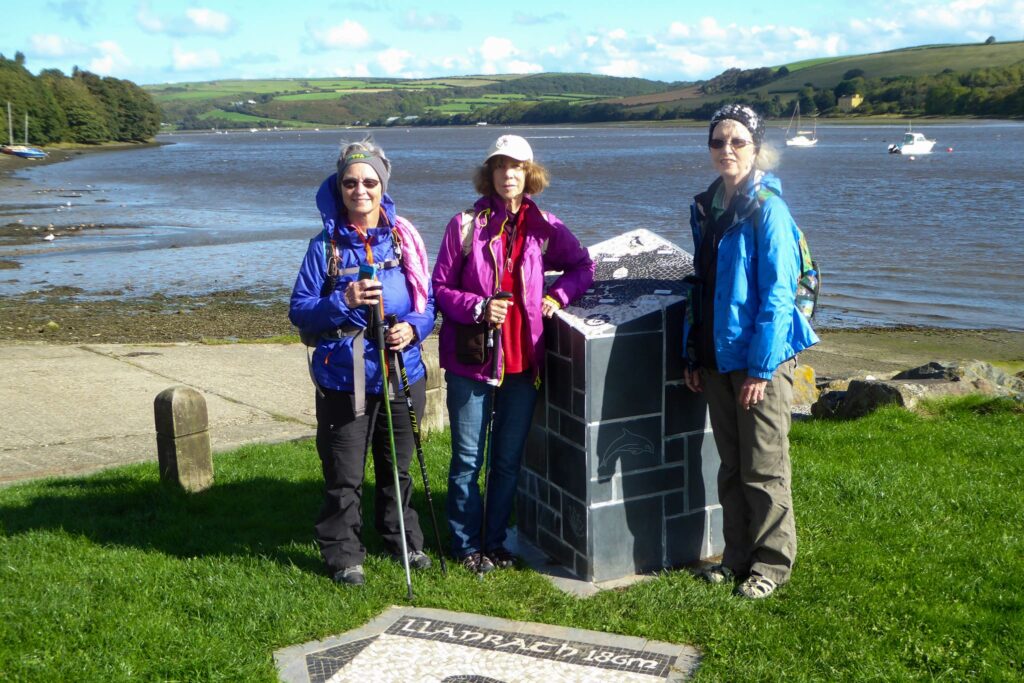
Can I walk it solo?
Yes – the PCP is well-suited for solo walkers. You’ll encounter friendly faces along the way, yet there’s plenty of solitude if you’re seeking peace and time to reflect. The trail’s varied landscapes create perfect moments for quiet connection with nature.
What footwear do I need?
A comfortable, waterproof pair of broken-in walking boots is essential. While many sections are on well-maintained trails and beaches, there are areas that can be rocky, uneven, or boggy after rain.
How do I reach the start of the walk?
Many of the towns and villages along the path are well connected with public transport, so you should be able to reach your starting point fairly easily, no matter where you are travelling from. We suggest using Traveline Cymru and Visit Wales to help with planning your journey.
Your Absolute Escapes information pack will include step-by-step directions to your accommodation.
Is the path well waymarked?
Yes – the route is clearly signposted with the distinctive white acorn symbol of the National Trail. The trail is also well maintained, and as it follows the coast, navigation is generally straightforward.
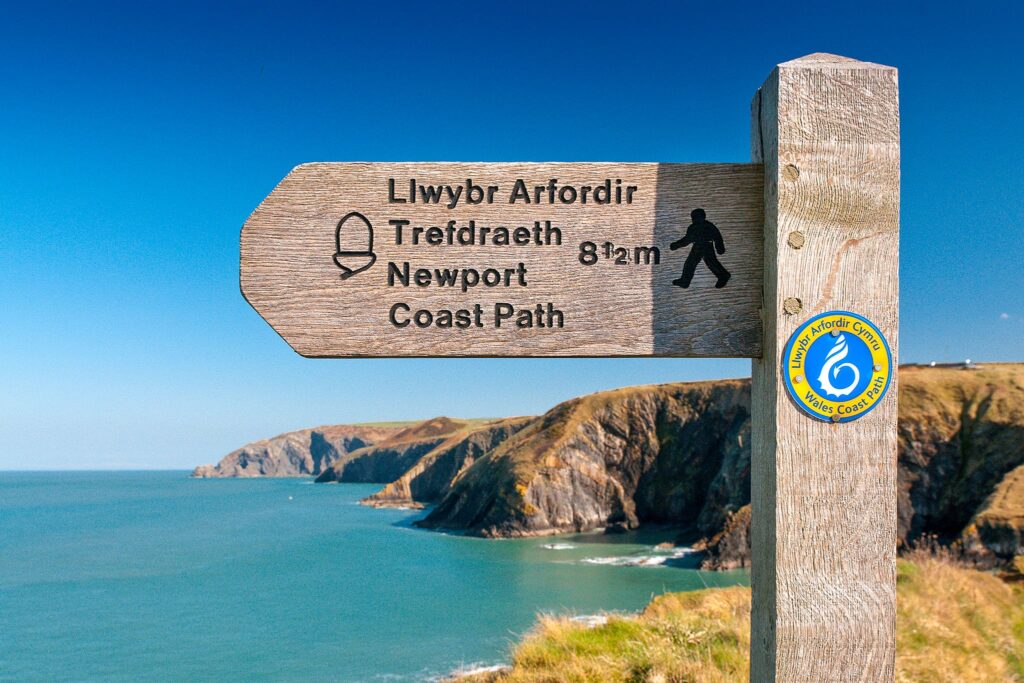
Will I need a map and guidebook?
While signage is generally excellent, it’s always helpful to have a map and guidebook. The guidebook is not only useful for navigation but also rich with local insights to help you better connect with the places you pass through.
Where can I eat and drink along the trail?
One of the joys of walking the Pembrokeshire Coast Path is discovering the excellent food and drink available in the coastal towns and villages. From our experience guiding walkers along this route, here are some standout places we recommend:
- The Baytree, Tenby – A warm, family-run restaurant serving homemade dishes made with local produce. Their seafood comes straight from nearby Tenby Harbour. Don’t miss their cocktail menu and local ales from Harbwr Brewery.
- The Sloop Inn, Porthgain – Dating back to 1743, this cosy inn offers hearty Welsh food and a wide selection of ales in a setting full of character.
- GRAIN, St Davids – Craving pizza? This stylish spot serves up delicious wood-fired pizzas (with a Welsh twist) alongside local ciders and craft beers.
- The Griffin, Dale – Celebrated for fresh fish and seafood, this restaurant combines excellent service with breathtaking coastal views – best enjoyed from the terrace on a sunny day.
- Cafe Môr, Angle – A unique experience – this seaweed-themed “boat kitchen” serves award-winning seafood street food, including seaweed tea and fresh seafood rolls.

How can I book a walking holiday on the Pembrokeshire Coast Path?
We know the Pembrokeshire Coast Path inside out and would be delighted to arrange an unforgettable self-guided walking holiday for you. Visit the Pembrokeshire Coast Path section of our website to browse our suggested itineraries and find inspiration for your trip.
Once you’ve chosen the route that’s right for you, simply send us an enquiry – we’ll take care of all the arrangements, leaving you free to enjoy one of the UK’s most spectacular long-distance walks.
If you have any questions we haven’t covered above, we’d be happy to help. You can call our friendly team on +44 (0)131 610 1210 or email us at enquiries@absoluteescapes.com.
Katie Rogen and Rachel Rose
